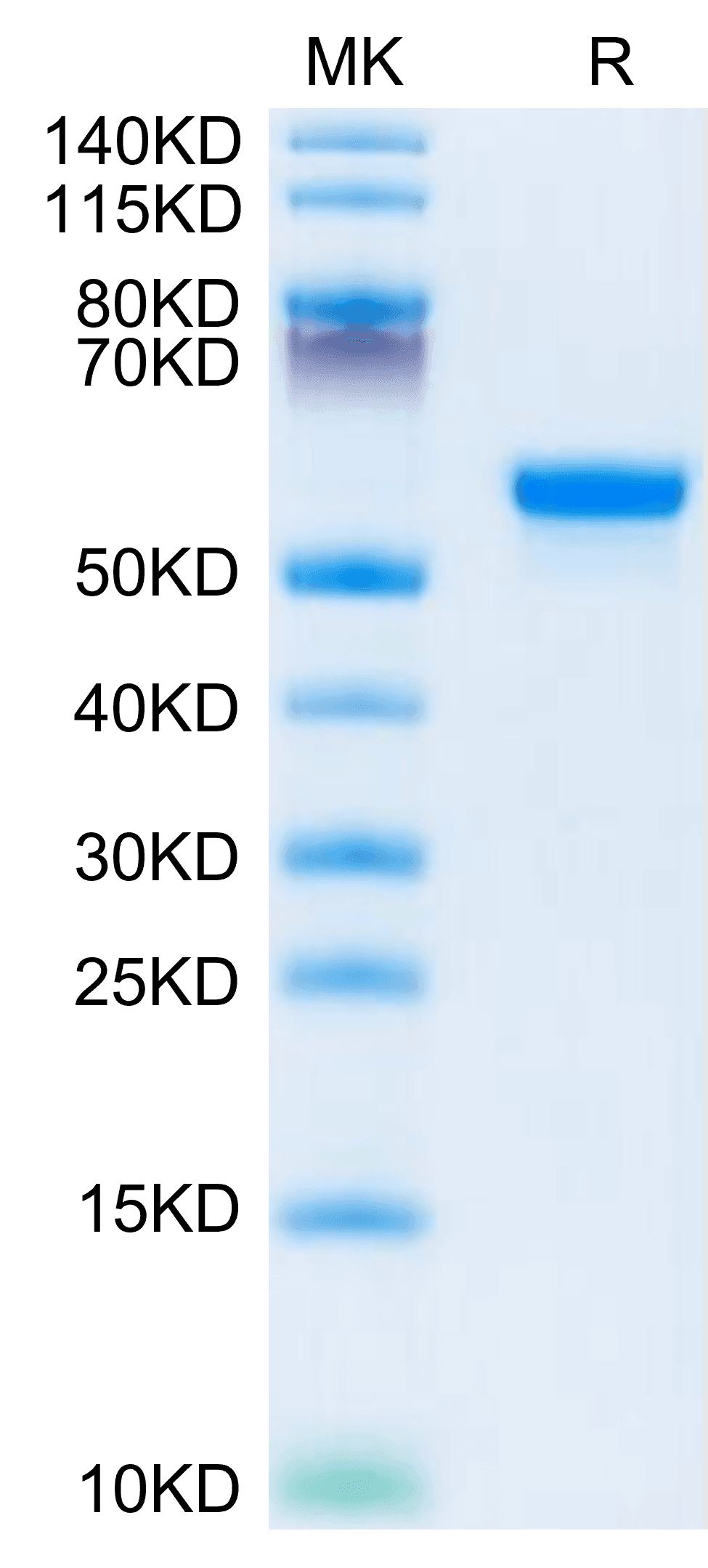| Weight | 1 lbs |
|---|---|
| Dimensions | 9 × 5 × 2 in |
| accession | Q99538 |
| express system | HEK293 |
| product tag | N-His |
| purity | > 95% as determined by Tris-Bis PAGE |
| background | Recently, functional studies have demonstrated that legumain (LGMN) cleaves both amyloid β-protein precursor and tau, promoting senile plaques and formation of neurofibrillary tangles, which may play a crucial role in the pathogenesis of Alzheimer's disease (AD). In single-variant association analysis, none of the common variants in LGMN were statistically significant. In gene-based analysis, the LGMN gene also showed no association with AD. |
| molecular weight | The protein has a predicted MW of 48.6 kDa. Due to glycosylation, the protein migrates to 55-65 kDa based on Tris-Bis PAGE result. |
| available size | 100 µg, 500 µg |
| endotoxin | Less than 1EU per μg by the LAL method. |
Human LGMN Protein 3917
$240.00 – $800.00
Summary
- Expression: HEK293
- Pure: Yes (SDS-PAGE)
- Amino Acid Range: Val18-Tyr433
Human LGMN Protein 3917
| protein |
|---|
| Size and concentration 100, 500µg and liquid |
| Form Liquid |
| Storage Instructions Valid for 12 months from date of receipt when stored at -80°C. Recommend to aliquot the protein into smaller quantities for optimal storage. Please minimize freeze-thaw cycles. |
| Storage buffer Shipped with dry ice. |
| Purity > 95% as determined by Tris-Bis PAGE |
| target relevance |
|---|
| Recently, functional studies have demonstrated that legumain (LGMN) cleaves both amyloid β-protein precursor and tau, promoting senile plaques and formation of neurofibrillary tangles, which may play a crucial role in the pathogenesis of Alzheimer's disease (AD). In single-variant association analysis, none of the common variants in LGMN were statistically significant. In gene-based analysis, the LGMN gene also showed no association with AD. |
| Protein names Legumain (EC 3.4.22.34) (Asparaginyl endopeptidase) (AEP) (Protease, cysteine 1) |
| Gene names LGMN,LGMN PRSC1 |
| Protein family Peptidase C13 family |
| Mass 9606Da |
| Function Has a strict specificity for hydrolysis of asparaginyl bonds (PubMed:23776206). Can also cleave aspartyl bonds slowly, especially under acidic conditions (PubMed:23776206). Involved in the processing of proteins for MHC class II antigen presentation in the lysosomal/endosomal system (PubMed:9872320). Also involved in MHC class I antigen presentation in cross-presenting dendritic cells by mediating cleavage and maturation of Perforin-2 (MPEG1), thereby promoting antigen translocation in the cytosol (By similarity). Required for normal lysosomal protein degradation in renal proximal tubules (By similarity). Required for normal degradation of internalized EGFR (By similarity). Plays a role in the regulation of cell proliferation via its role in EGFR degradation (By similarity). |
| Catalytic activity #N/A |
| Subellular location Lysosome . |
| Tissues Ubiquitous. Particularly abundant in kidney, heart and placenta. |
| Structure Homodimer before autocatalytic removal of the propeptide (PubMed:23776206). Monomer after autocatalytic processing (PubMed:23776206). May interact with integrins (PubMed:23776206). |
| Post-translational modification Activated by autocatalytic processing at pH 4. |
| Domain In |
| Target Relevance information above includes information from UniProt accession: Q99538 |
| The UniProt Consortium |
Publications
Publications
| pmid | title | authors | citation |
|---|---|---|---|
| We haven't added any publications to our database yet. | |||
Protocols
| relevant to this product |
|---|
Documents
| # | ||
|---|---|---|
| Please enter your product and batch number here to retrieve product datasheet, SDS, and QC information. | ||















